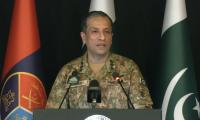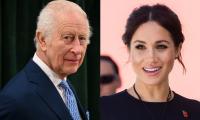Is more debt a cure for high-debt economies? That is the conundrum faced by most distressed economies.
In recent years, Argentina and Greece have dealt with similar crises. In Pakistan’s case, numbers lose meaning. Data shows that in this fiscal’s first quarter, interest payment was 48 percent of total federal expenditure. Add to it subsidy, pension, and defence and the sum is 97 percent of total expenditure and 103 percent of revenue. Development is less than 8 percent.
The past helps us see where we may have gone wrong. In this century alone, Pakistan has received large sums of money. We did not use it to build long-term growth or even macro stability. In 19 years, Pakistan has availed five IMF facilities. In the first decade, we received large amounts of aid from the US, post 9/11, and loans from other bilateral and multilateral partners. Also, Saudi Arabia allowed deferred payment for oil imports. Other lenders agreed to reschedule debt. Estimates of total amounts available to us between 2001 and 2007 are as high as $50 billion. This is a massive sum.
Yet, we were back with the IMF in 2008, with a 40 percent devaluation of the Pak rupee. Between 2002 and 2008, our GDP growth rate never fell below 5 percent and peaked at 7.7 percent in FY04. In the subsequent five years, our growth rate ranged between a paltry 0.36 percent and 3.8 percent. Why couldn’t we use the resources of the first decade to build production capacity for the long term?
Later years, under an elected dispensation, were not much different. There was no visible effort to build the manufacturing base or adopt new technology. Nor did we try to fill essential gaps in workers’ and managers’ skills. Exports stayed in serial decline. And macro instability continued. We closed FY13 with one of the highest fiscal deficits. FY18 ended with the highest ever current account deficit.
Clearly, this has to do with a lack of strategic thinking in Pakistan. Of the over $90 billion grants and loans disbursed since 2000, $34 billion or 38 percent is project aid. The rest was for budget support, for the euphemistically named policy reforms and as balance of payments help. This was money consumed, not invested. We have been allies, and lending agencies coddled our profligacy.
Project aid stimulates the economy and could, if the projects are chosen well, create returns to service the loans. Much of the above loans increased our debt with no way to pay them back.
The onus for such weak management falls on us and not the lenders. Economies grow when they build capital. That means new machinery to produce goods. Also, infrastructure, not gleaming fancy ones, but those that help firms become productive. And it means investing in people to raise the quality of human capital to adopt new technology. For several decades, we have moved rudderless.
During this time, we blurred the lines in economic policymaking. Fiscal management has become a proxy for a growth strategy. Rather than lead with vision, we focused only on managing public finance. To grow, we need to produce more industrial and agricultural goods.
But Pakistan’s policy has been financial engineering for survival. The assumptions behind this policy are entirely reasonable. Economic stability should be the first priority. Yet, without growth in manufacturing, and by extension the economy, how will government increase revenue to reduce budget deficit. Or how would the economy export more to close the trade gap? We have let hope prevail over strategy.
A look at some other data is instructive. As a ratio of GDP, the economy is producing less than what it did in the past. This should be a huge cause for concern. Economies grow with more output. Yet, in 2000, the share of agriculture and industry in GDP was over 46 percent. In 2019, it fell to 39 percent. Each year since 2000 has seen a decline. Share of manufacturing has not just fallen. There are very few new products introduced in the economy.
But the economy has grown. So, where has the growth come from? Share of services has risen from 53 percent of GDP in 2000 to 61 percent in 2019. That would have been a good thing if the increase was in the areas that can be exported, such as IT or finance. That doesn’t seem to be the case. In the last twenty years, growth has been in government service, wholesaling and retailing, and in others. The ratio of export of services to GDP has declined.
Without addressing the underlying causes of long-term growth, we celebrated short-term bursts of moderate growth from one-time inflow of funds.
In fact, many drivers of growth have regressed. They include savings, investment and manufacturing to GDP. The blip in investment seen in 2005 is because of the end of quota in world trade in textiles. As interest rates rose soon after, many of the investments ended up in loss.
All this must reflect on exports. In 1992, exports were over 17 percent of GDP, which fell to a mere 9 percent by 2016. In all the above indicators, we stand well below other economies of South and East Asia. The same is true for infrastructure services and human capital.
So, what can we do? The government has vowed to move in the right direction. It has shown the resolve to stabilize the economy, though it is a work in progress. Likewise, the GoP has countered entrenched interests in tax collection. There is still much to do in the areas of revenue and growth.
In parallel, there must now be a robust plan to boost output, especially industrial. We can do so by dealing with policy failures that have festered for years. The obvious ones are power and water supply. Others are the gaps in the supply of public goods in the form of both hard and soft infrastructure. And we need specific policies to promote industry. I will subsequently spell out the action to be taken.
The writer is chair and CEOInstitute for Policy Reforms, and a former commerce minister.
People of that time believed that an eclipse was a symbol of displeasure of gods
Debt-to-GDP ratio, which stood at 51% in 2009-10, peaked at 74% in 2019-20 and remains alarmingly high at 65% in 2023-24
Point is not to pour cold water over government’s achievements, but to look at baseline metrics
Loss of biodiversity is stark reminder that urban mismanagement is not just infrastructural failure but ecological...
Strong public warning systems can also help ensure quick evacuations in places prone to fires
PPPs in Pakistan's WASH sector face significant regulatory and policy challenges that hinder their effectiveness







